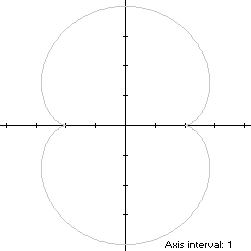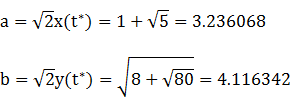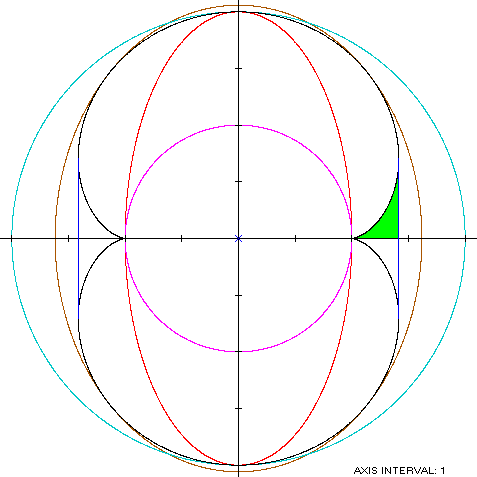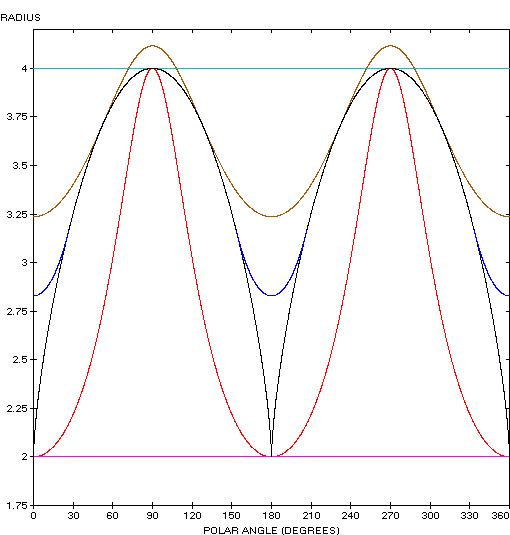Balmoral Software

Balmoral Software

x(t) = 3cos(t) - cos(3t)This bisymmetric curve is traced out in a counterclockwise direction around the origin, starting from the cusp at (2,0). Its maximum width occurs at the point pairsy(t) = 3sin(t) - sin(3t), 0 ≤ t < 2π
 which determine that the
nephroid is non-convex by the
multiple local extrema test. The
values of t at these point pairs are ±π/4 (right pair) and
±3π/4 (left pair). The maximum height of the nephroid is between the
point pair (0,±4), so the width x height of its bounding rectangle is
which determine that the
nephroid is non-convex by the
multiple local extrema test. The
values of t at these point pairs are ±π/4 (right pair) and
±3π/4 (left pair). The maximum height of the nephroid is between the
point pair (0,±4), so the width x height of its bounding rectangle is

 as shown in blue in the left
diagram below. We have
as shown in blue in the left
diagram below. We have
x'(t) = -3sin(t) + 3sin(3t)so by (L1), the perimeter of the convex hull isy'(t) = 3cos(t) - 3cos(3t)
which is about 6% shorter than that of the nephroid.
To compute the area of the convex hull, we can see by
(A1) that the area A1 of the
region in green in the left diagram below is the integral of y dx from
 at the maximum abscissa point:
at the maximum abscissa point:
Therefore, the area of the convex hull is
A + 4A1 = 12π + 4(5 - 3π/2) = 20 + 6π = 38.849556,which is about 3% more than the area of the nephroid.
x2(t) + y2(t) = 10 - 6cos(2t)has its extrema on the coordinate axes at (±2,0) and (0,±4), so the inradius is 2 and the circumradius is 4. A candidate for the inellipse is one enclosed by the annulus between these two circles, with
x(t)y(t) = [9sin(2t) - 6sin(4t) + sin(6t)]/2is maximized in the first quadrant when
The circumellipse dimensions are
For verification, we have
Figure Parameters Perimeter Area Centroid Incircle R = 2 12.566371 12.566371 Inellipse a = 2
b = 419.376896 25.132741 Nephroid 24 37.699112 Convex hull 22.627417 38.849556 Circumellipse 23.181126 41.848410 Circumcircle R = 4 25.132741 50.265482


Copyright © 2021 Balmoral Software (http://www.balmoralsoftware.com). All rights reserved.